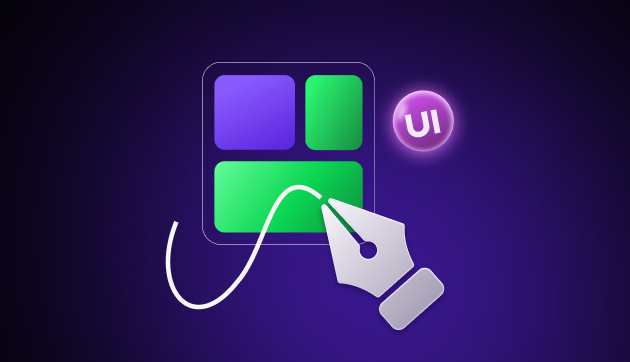
10 Real-World UI/UX Applications: The Magic of UI/UX
Jan 16, 2025 3 Min Read 9717 Views
(Last Updated)
Are you ever amazed by how seamlessly you navigate your favorite mobile apps, websites, or software applications? Have you ever wondered why some digital products are so intuitive and engaging while others leave you frustrated and confused?
The answer lies in the world of User Interface (UI) and User Experience (UX) design. In this article, we will explore real-world UI/UX applications, exploring how these design principles impact our daily lives and revolutionize the way we interact with technology and digital experiences.
Table of contents
- Real-World UI/UX Applications
- Mobile Apps
- Websites
- Software Applications
- E-commerce Platforms
- Wearable Devices
- Smart Home Interfaces
- Virtual Reality (VR) and Augmented Reality (AR)
- Educational Platforms
- Social Networking Platforms
- Gaming Interfaces
- Conclusion
- FAQ
- What is UI/UX, and how does it differ from each other?
- What are the key components of a successful UI/UX design?
- How does UI/UX design affect mobile app success?
- How does UI/UX design contribute to brand identity?
- What is the role of UI/UX designers in the development process?
Real-World UI/UX Applications
UI/UX are essential components of modern software and digital product design. UI/UX Design tools like Figma, and Adobe create magic and turn our frustration into delight by enhancing the user experience. Here are 10 real-world applications of UI/UX and their explanations:
Mobile Apps

Mobile apps are prevalent in today’s digital landscape, covering a wide range of industries such as social media, e-commerce, fitness, finance, and more. UI/UX plays a crucial role in ensuring seamless navigation, intuitive controls, and an engaging user experience on various screen sizes and devices.
Websites

UI/UX design is fundamental to creating user-friendly websites. It involves organizing content, designing intuitive navigation, ensuring responsive layouts, and crafting visually appealing interfaces to keep visitors engaged and encourage conversion.
Software Applications
Both desktop and web-based software applications benefit from UI/UX design. An intuitive interface, clear call-to-action buttons, and user-centric workflows enhance productivity and user satisfaction.
E-commerce Platforms

UI/UX design significantly impacts online shopping experiences. Intuitive product categorization, straightforward checkout processes, and attractive visuals help users find products easily and encourage them to complete purchases.
Meanwhile, as we continue with our list, ensure you understand the fundamentals of UI/UX, including heuristic analysis, journey maps, testing, etc. If you want to explore more about it, join GUVI’s UI/UX Course with placement assistance. You’ll also learn about the tools used in UI/UX: AdobeXd, Illustrator, Photoshop, Figma, and many more. Build some fantastic real-time projects to get hands-on experience.
Also, if you want to get started with UX design at your own pace, try GUVI’s UX design fundamentals certification course.
Wearable Devices

Wearables, like smartwatches and fitness trackers, require effective UI/UX to provide users with a seamless and enjoyable interaction experience. It involves designing easy-to-read displays and user-friendly gestures to control the devices.
Smart Home Interfaces

User interfaces for smart home systems need to be user-friendly and accessible to all members of a household. Well-designed UI/UX enables users to control various devices and services seamlessly, making the home smarter and more efficient.
Virtual Reality (VR) and Augmented Reality (AR)

VR and AR applications require immersive and intuitive user interfaces to engage users effectively. UI/UX design is crucial for guiding users through virtual environments and enhancing their overall experience.
Educational Platforms
UI/UX design in e-learning platforms influences student engagement and knowledge retention. Clear organization of content, interactive elements, and user-friendly interfaces contribute to a positive learning experience.
Social Networking Platforms

UI/UX plays a critical role in social media platforms, ensuring seamless content discovery, easy communication, and personalized experiences for users.
Gaming Interfaces
In video games, UI/UX design impacts gameplay by providing clear information, intuitive controls, and engaging visual feedback, enhancing the overall gaming experience.
Conclusion
In conclusion, the real-world applications of UI/UX design have become an indispensable aspect of modern-day technology and digital experiences.
Whether it’s simplifying complex data, guiding users through virtual environments, or streamlining e-commerce processes, effective UI/UX design empowers businesses and organizations to create intuitive, engaging, and user-centric interfaces.
As technology continues to evolve, the significance of UI/UX design will only grow, with its impact reaching into every facet of our daily lives, and it is important for you to stay up to date with the latest trends in UI/UX by either reading online blogs or enrolling yourself in a certified online UI/UX course to understand it better.
FAQ
UI stands for User Interface, which deals with the visual design and layout of a digital product. UX stands for User Experience, focusing on the overall user journey and interaction with the product. While UI deals with the presentation, UX deals with how the product feels and functions for users.
A successful UI/UX design includes user research, wireframing, prototyping, visual design, usability testing, and continuous improvement based on user feedback.
Effective UI/UX design is critical for mobile apps as it determines how users navigate the app, find information, and complete tasks. A positive user experience increases the chances of app adoption and success.
UI/UX design helps reinforce brand identity through the consistent use of colors, typography, and visual elements that align with the brand’s values and messaging.
UI/UX designers collaborate with developers, product managers, and stakeholders to create user-centered designs, conduct usability testing, and iterate based on user feedback, ensuring a successful and user-friendly end product.















![What Does a UI/UX Designer Do? [Career Guide] 14 What does a UI/UX designer do?](https://www.guvi.in/blog/wp-content/uploads/2023/12/UX-Designer-Do_.webp)



Did you enjoy this article?